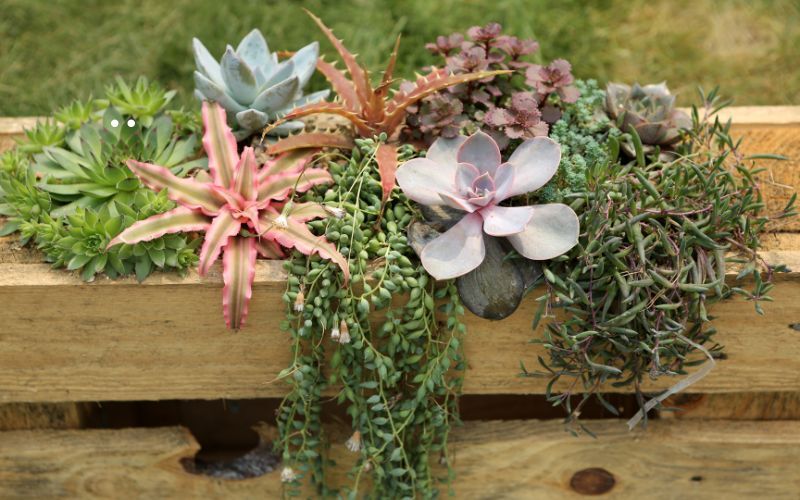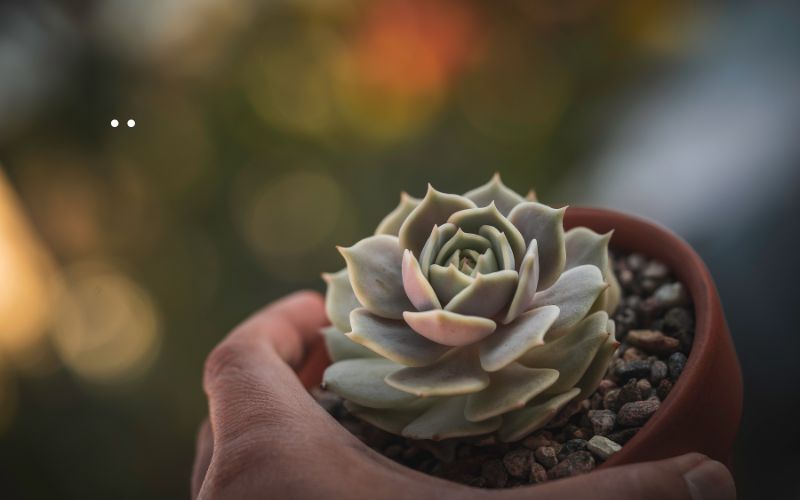Echeveria for the most part is not considered to be fully winter-hardy. Most varieties can only be grown outdoors in USDA hardiness zones over 9a. The biggest threats to Echeveria are cold temperatures combined with wet or poorly drained soils. Extreme temperature changes, soggy weather, or snowfall will turn your succulents to mush within just a few days. The warmer spring and summer months are the only times that Echeveria happily grows outdoors, enjoying the higher light levels and high summer temperatures.

When To Put Echeveria Outside
Echeveria must wait until nighttime temperatures are reliably above 50F (10C). In most growing zones this will be May through early October. After the plants have been fully acclimated to the outdoors they can tolerate slightly lower temperatures, although will need to be given protection from unusually late frosts.
Over the course of a week or more gradually move your Echeveria to a part or full sun location. Moving it to bright light quickly always results in faded, sunburned leaves that are not quickly regrown.
When To Bring Echeveria Indoors
Start to prepare your Echeveria for growing indoors when the nighttime temperatures are falling into the mid to lower 50sF. (10 -13C). Move the plant to a more sheltered location with less direct bright light. This helps the plant to prepare for the naturally lower light levels of indoors. During this period of a week or so can also be used to quarantine the plant for any insect pests that may have taken up residence over the summer.
Inspect the plant daily for signs of aphid or spider mite damage. Yellowing or stippled leaves and webbing formed between leaves and near leaf and stem joins are classic signs that you have spider mites to deal with. They also thrive in dry, hot climates and might not even be an issue if you have periodic rainy periods through the summer months.

Caring For Echeveria Outdoors
Echeveria are in some ways easier to care for when they are vacationing outdoors for the summer. The main issue outdoors (as with growing indoors) is drainage and the possibility of overwatering. Make sure that the drainage of both the container and the potting medium is excellent. Non-peat-based potting mediums with plenty of crushed rock, perlite, or pumice added to allow for very fast drainage along with a moderate amount of moisture retention by the coir and perlite.
The size of the crushed gravel or perlite should be relatively large for a potting mix so that the soil mix does not compact at all around the root base. Setting a container on pot feet or bricks will also help with drainage and keep the pot from standing in water at any time. Shallow terra cotta and other unglazed ceramic pots are ideal for growing any succulent as it helps to disperse excess moisture and speed drying between waterings.
Sources:
“Succulents: How to Care for and Propagate.” Somervell County Master Gardeners. www.txmg.org
“Growing Succulents in the Pacific Northwest.” Washington State University. www. wsu.edu
 Author Robbin Small - Published 27-12-2024 Author Robbin Small - Published 27-12-2024 |
